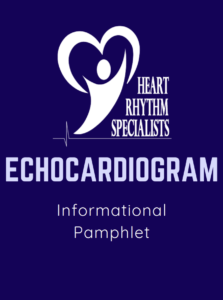What is an Echocardiogram?
An echocardiogram (echo) is a test that uses ultrasound waves to create images of your heart. This test allows the doctor to check the health and function of your heart’s chambers, valves, vessels, and aorta.
What is an Echocardiogram used for?
An echocardiogram helps check for a variety of heart problems and conditions such as:
- blood clots
- reduced ejection fraction
- abnormally thick heart walls
- damaged or leaky heart valves
- tumors in the heart
- heart defects
What happens in an Echocardiogram?
- During a transthoracic echo, a technician places a device called a transducer against your chest and aims an ultrasound beam at the heart. These waves “echo” back to the probe which allows for them to be converted into images that can be interpreted.
- During a transesophageal echo (TEE), sedatives are given and a transducer in the form of a long thin tube is guided into your esophagus to record the images. This method allows for clearer images.
- A stress echo follows the same process as a transthoracic echo, except it is done after you have done some exercise. If you are not able to exercise, you will be given a medication to increase your heart rate as if you were exercising.
- An echo test takes 30 minutes. For the TEE specifically, you may be observed for a few hours due to the use of sedatives.
Pre-Procedure Instructions
- Notify Dr. Yoo about any allergies you may have to any adhesives, latex, medication, etc.
- Notify Dr. Yoo about any medication being taken and follow your provider’s instructions on whether to continue or stop them before the procedure.
- Do not eat for 2-4 hours before the transesophageal procedure.
Post-Procedure Instructions
- Normal activity may be resumed immediately after an echocardiogram.
- Follow any specific after procedure instructions given by Dr. Yoo.
- It is suggested that someone else drive you from the hospital after a transesophageal echo.
Additional Resources:
- Refer to the surgical booklet provided if you are a current patient.
- You may refer to the websites linked below.
